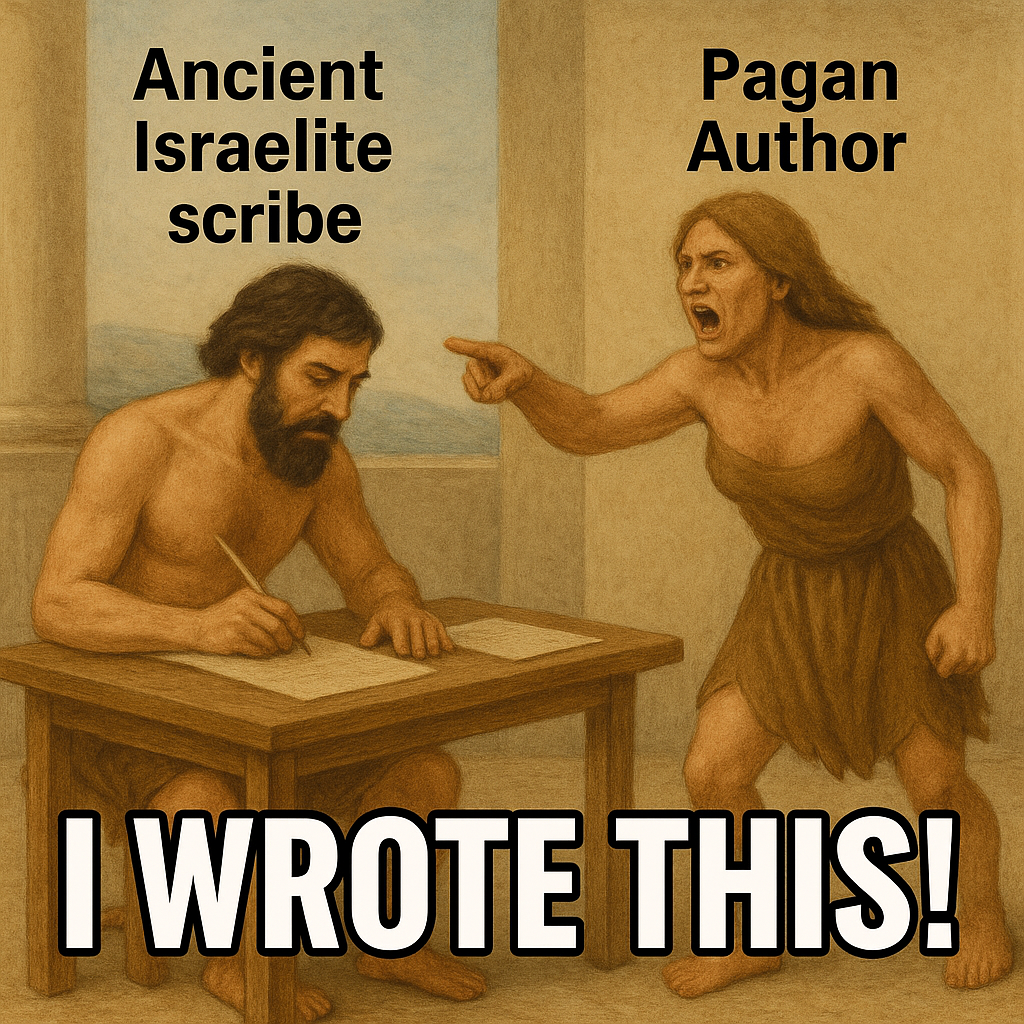Pagan Myths Behind the Bible
 Many biblical stories are retellings or adaptations of much older pagan myths, supported by archaeology and textual studies. Below is a concise summary of key biblically related artifacts and ancient myths that the Bible drew upon or was influenced by, with updated context. These findings reveal a complex tapestry of cultural exchange, showing how early Israelite religion was shaped by surrounding ancient Near Eastern beliefs. The evidence challenges traditional views and exposes the Bible as a compilation of adapted myths. By examining these origins, readers can see how spiritual ideas evolved through borrowing mythic themes and cultural diffusion that formed the biblical narrative.
Many biblical stories are retellings or adaptations of much older pagan myths, supported by archaeology and textual studies. Below is a concise summary of key biblically related artifacts and ancient myths that the Bible drew upon or was influenced by, with updated context. These findings reveal a complex tapestry of cultural exchange, showing how early Israelite religion was shaped by surrounding ancient Near Eastern beliefs. The evidence challenges traditional views and exposes the Bible as a compilation of adapted myths. By examining these origins, readers can see how spiritual ideas evolved through borrowing mythic themes and cultural diffusion that formed the biblical narrative.
Biblically Related Artifacts and Their Dates
- Mount Ebal "Curse Tablet" (c. 1200 BCE): A small folded lead tablet (~2 x 2 cm) discovered in 2019, containing about 48 Proto-Hebrew characters. Researchers led by Scott Stripling claim it includes a legal curse invoking God (YHWH), with phrases like “Cursed by the God yhw; You will die cursed,” paralleling curse ceremonies in Deuteronomy 27 and Joshua 8. However, its authenticity and inscription remain highly controversial and debated among scholars, with critics questioning whether any script is actually legible. The final academic consensus is pending, though the tablet may reflect early Israelite religious practices or could alternatively be a mundane lead object.
- Ketef Hinnom Silver Scrolls (c. 600 BCE): Two small silver amulets inscribed with the priestly blessing from Numbers 6:24-26, representing the oldest surviving texts containing actual biblical verses.
- Dead Sea Scrolls (2nd century BCE to 1st century CE): Manuscript fragments encompassing nearly all books of the Hebrew Bible, including a complete Book of Isaiah. These confirm the textual consistency and preservation of biblical texts over time.
- Yahweh ?ebaot Inscription (c. 800 BCE): Paleo-Hebrew inscription referencing “Yahweh of Hosts,” a divine title frequently appearing throughout the Old Testament.
Ancient Pagan Myths Reflected in Biblical Accounts
- Epic of Gilgamesh (2100 BCE): The Babylonian flood narrative predated Genesis by over 1,200 years, including a divine warning, a vessel preserving animals, and a post-flood covenant. The biblical account adopts and adapts these motifs within a monotheistic framework.
- Enuma Elish (1800 BCE): Babylonian creation epic featuring Marduk slaying Tiamat (the “deep”), paralleled in the Hebrew use of tehom in Genesis 1.
- Atrahasis Epic (1700 BCE): Includes themes of humans formed from clay and divine plagues, corresponding closely with accounts in Genesis and Exodus.
- Egyptian Book of the Dead (1550 BCE): Introduced the concept of judgment after death with souls weighed by Anubis, centuries before similar biblical ideas.
- Adapa Myth (1400 BCE): About a man offered eternal life who loses it, paralleling Eden’s lost immortality theme.
- Tale of Two Brothers (1200 BCE): Egyptian story of betrayal reflecting motifs in the biblical Joseph narrative.
- Baal Cycle (1400–1200 BCE): Baal’s battles against sea monsters parallel biblical descriptions of Yahweh’s triumph over Leviathan.
- Dumuzi & Inanna (2100 BCE): The dying and rising shepherd god motif prefigures resurrection themes.
- Eridu Genesis (2100 BCE): Describes paradise and a forbidden fruit motif preceding the Eden story by over a millennium.
- Legend of Sargon (2300 BCE): Sargon’s basket birth story predates Moses’ infancy narrative.
- Virgin Births (c. 2400–2300 BCE+): Miraculous birth myths of Horus and Dionysus predate Christian narratives of virgin birth.
- The Fall and Pandora’s Box (700 BCE): Both involve a woman whose forbidden act brings suffering and loss of paradise, though with differing theological meanings.
- The Ten Commandments (1446 BCE or 1290 BCE) The biblical laws reflect influences from the Code of Ur-Nammu (c. 2100–2050 BCE), Code of Hammurabi (c. 1792–1750 BCE), Egyptian Principles of Maat (c. 2200 BCE), and Ancient Near Eastern treaty forms (14th–13th centuries BCE). Greek wisdom literature further impacted biblical ethical writings.
The Bottom Line
Most biblical stories—creation, the flood, judgment, moral law, and miraculous births—draw heavily from ancient pagan myths and earlier cultural artifacts across Egypt, Babylon, Sumer, and Canaan. Archaeological, linguistic, and comparative mythological evidence supports this complex heritage. Recognizing these influences enriches understanding of the Bible’s origins.
Belief is powerful. But facts are stubborn things.